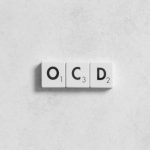
As an Elf Economist, research on obsessive-compulsive disorder (OCD) doesn’t often catch my attention. As the authors of a recent paper in Comprehensive Psychiatry point out, there’s relatively little economic evidence about OCD. Indeed, a quick search of PubMed unearths just 5 papers published in 2023 that were tagged with MeSH terms for OCD and Economics, despite the fact that estimates for the prevalence of OCD can be as high as 3%.
OCD is characterised by recurring, unwanted thoughts (obsessions) and repetitive behaviours (compulsions) that a person feels driven to perform. These behaviours and thoughts can significantly interfere with daily activities and cause distress.
In the UK, OCD treatment follows a ‘stepped-care’ model, starting with cognitive behavioural therapy (CBT) or selective serotonin reuptake inhibitors (SSRIs; to learn more, read Alan Underwood’s 2016 Mental Elf blog). But inpatient care may also be needed, at a much higher cost to the health service.
Understanding more about the cost-of-illness for OCD could help to guide the allocation of resources to research and care. As such, Kochar and colleagues (2023) conducted a cost-of-illness (CoI) study, seeking to estimate the economic burden of OCD in the UK over one year.

OCD ranks in the top 10 for global neuropsychiatric disability burden, yet little is known about the economic cost of OCD to individuals or society.
Methods
To estimate the total cost of illness for the UK, the researchers modelled children, adults, and elderly people with OCD separately, applying different rates of prevalence and severity and recognising the different treatment pathways for these groups. Prevalence and severity estimates were derived from publicly available national surveys and published studies on the distribution of severity in each group. The research is described as using a ‘bottom-up’ approach, meaning that individual cost components are added together, rather than teased apart from an estimate of total expenditure.
Costs were estimated separately for the different subpopulations. In addition to the unit costs of NHS treatments, out-of-pocket expenses and private therapy costs were considered, as was the value of lost productivity due to being less able to work. Some inputs were based on expert opinion and the researchers sensibly relegated these to scenario analysis.
Results
The annual cost-of-illness for OCD in the UK was estimated at £378 million from the care provider’s perspective. That’s £525 per person with OCD.
When including societal costs like lost productivity, out-of-pocket expenses, and private therapy, the CoI rose dramatically to over £5 billion, averaging £7,077 per person with OCD. This societal expense constituted 92% of the total CoI, underscoring the significant economic impact beyond health care costs. Lost productivity alone – which was only measured for adults – was valued at £4,797 per person, or £3.5 billion for the population. On average, patients were estimated to spend around £1,400 per year on private therapy.
Cost analysis by age showed that adults bore the greatest health care cost overall, due to the higher prevalence of OCD, though the average cost of care was highest for children (£651) due to the more regular provision of expensive treatments like CBT. The severity of OCD also influenced the costs of care, with severe cases generating more costs on average: £902 for people with severe OCD and £174 for people with mild OCD symptoms.
Treatment-wise, SSRIs are inexpensive at around £48 per patient, compared with care costs of £1,417 for each person receiving CBT. At the other end of the scale, patients who receive inpatient care incur £8,658 per year on average.
The scenario analyses and sensitivity analyses revealed that accounting for comorbid depression would more than double the estimated cost to the health service, and a similar magnitude of effect was found when presenteeism and caregiver productivity losses were accounted for.

The annual cost-of-illness for OCD in the UK (including personal expenses) was estimated to be over £5 billion, which totals to approximately £7,077 per individual diagnosed with OCD. On average, patients spend about £1,400 per year on private therapy.
Conclusions
- Despite relatively little research into its economic impact, health and care services are estimated to spend around £378 million on care for people with OCD in the UK.
- When broader societal costs are considered, the cost of the illness shoots to over £5 billion, or £7,077 per individual with OCD.
- The research suggests that patients and wider society bear a greater cost than the NHS.

OCD can reduce productivity through absenteeism, presenteeism (working less effectively), and through caregivers reducing their hours; this cost was estimated as greater than the cost to health care services like the NHS.
Strengths and limitations
The authors take a relatively conservative approach, which I consider to be a strength. They focus their base case analysis on inputs about which they can have some confidence, namely the prevalence and health care costs estimates. This means that we can consider their headline estimate of £378 million to represent a relatively robust lower bound for the costs associated with OCD in the UK.
Another strength of the study is that it breaks down estimates according to age and severity, which not only makes the findings more informative but also makes it easier for readers to sense-check the results.
One major limitation of the study is its reliance on expert opinion for analyses beyond the base case, and the authors do not do a good job of describing how they went about eliciting these expert opinions. We do not know whether they used a recognised and validated framework, and the results derived from these inputs (e.g., relating to comorbid depression and private therapy) should not be considered robust.

Whilst the authors take a relatively conservative approach with estimating the economic cosst (increasing robustness), they are vague about their reliance on expert opinions within the analyses (decreasing robustness). Clear reporting of methods is vital in determining reliability and validity.
Implications for practice
Cost-of-illness studies tend to produce big numbers that are difficult to interpret in isolation. Over the years, we’ve written about similar studies for bipolar disorder, perinatal mental health problems, multimorbidity, and probably others. So what should we read into these numbers?
Well, the authors make some comparisons with other mental health conditions, noting that the cost is lower than cited costs for depression, but higher than those for anorexia. Personally, I would be very wary of such comparisons, as the most important determinant of differences could be methodological choices, such as the time horizon, the inclusion and exclusion of different cost categories, and approaches to stratifying the population.
Where studies like this are most useful is in the within-study comparisons that they facilitate. For instance, the size of the cost burden associated with private therapy and out-of-pocket expenditure, at more than £1,700 per person per year, is startlingly high, especially in comparison to the cost to the NHS of £525 per person. The evidence here is weak, being based on expert opinion, so it shouldn’t be accepted at face value, but it does highlight an important area for future research. Further studies could investigate the frequency with which different groups of people with OCD are accessing private therapy, how much this is costing them, and the impact that it is having on their lives.
Overall, this study makes a good case for the significance of the economic burden of OCD in the UK, and the findings should inform future strategies for investments in relevant research and care for people with OCD.

This study signals the need for more research to understand the economic burden of OCD, particularly on the individual and caregivers.
Statement of interests
None.
Links
Primary paper
Kochar, N., Ip, S., Vardanega, V., Sireau, N. T., & Fineberg, N. A. (2023). A cost-of-illness analysis of the economic burden of obsessive-compulsive disorder in the United Kingdom. Comprehensive Psychiatry, 127, 152422.
Other references
Sampson, C. (2015). Do perinatal mental health problems cost the UK £8 billion per year? The Mental Elf.
Sampson, C. (2015). Searching for the cost of bipolar disorder. The Mental Elf.
Saunders, K., & Vereeken, S. (2023). The healthcare cost of multimorbidity in people with mental health diagnoses in Denmark. The Mental Elf.
Underwood, A. (2016). Antidepressants and psychotherapy for OCD in adults: network meta-analysis. The Mental Elf.
Photo credits
- Photo by Pawel Czerwinski on Unsplash
- Photo by Christopher Bill on Unsplash
- Photo by Steve Smith on Unsplash
- Photo by Nicolas J Leclercq on Unsplash
- Photo by Markus Winkler on Unsplash
- Photo by Annie Spratt on Unsplash

Excellent review. This is a good response to all those comments that those with OCD must make excellent cleaners.